Advisory
|
If you arrived here by any means other than from the
Index of Impacts,
it is suggested that you start at the Introduction
to gain an understanding of what follows.
|
The
Craters of the Moon Meteor Impact
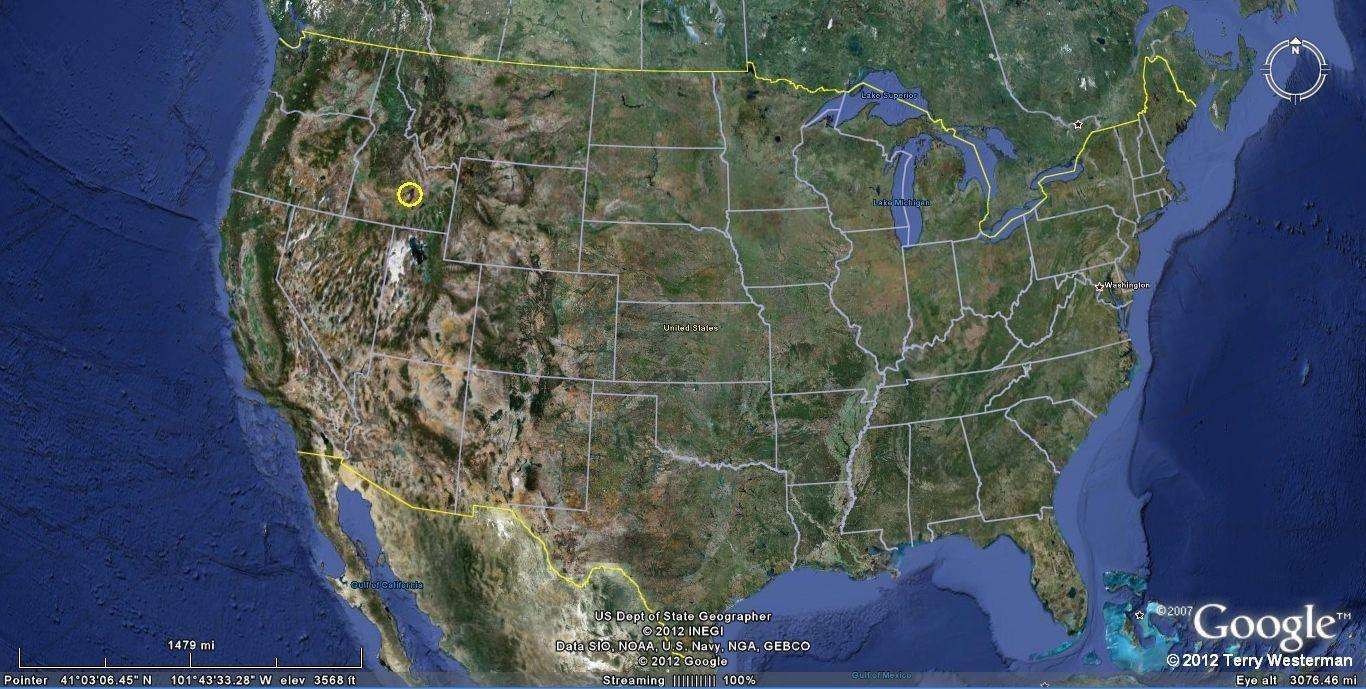
Craters of the Moon National Monument is an area in Idaho (yellow
circle) which has had numerous lava flow eruptions over the past
15,000 years. The cause of these eruptions appears to be cracks in
the Earth where the lava poured out. While this area has had various
lava flows, it is not known as a volcano and has only relatively
small cinder cones and spatter cones. The impact did not leave a
crater. The area in the yellow circle above, is in the image
below.

This was a hard impact, where a hard rock asteroid struck the Earth
at high velocity, penetrating it like a bullet, and leaving cracks in
the crust of the Earth so that the molten lava could leak out. This
is similar to, but smaller than the Yellowstone
Impact.
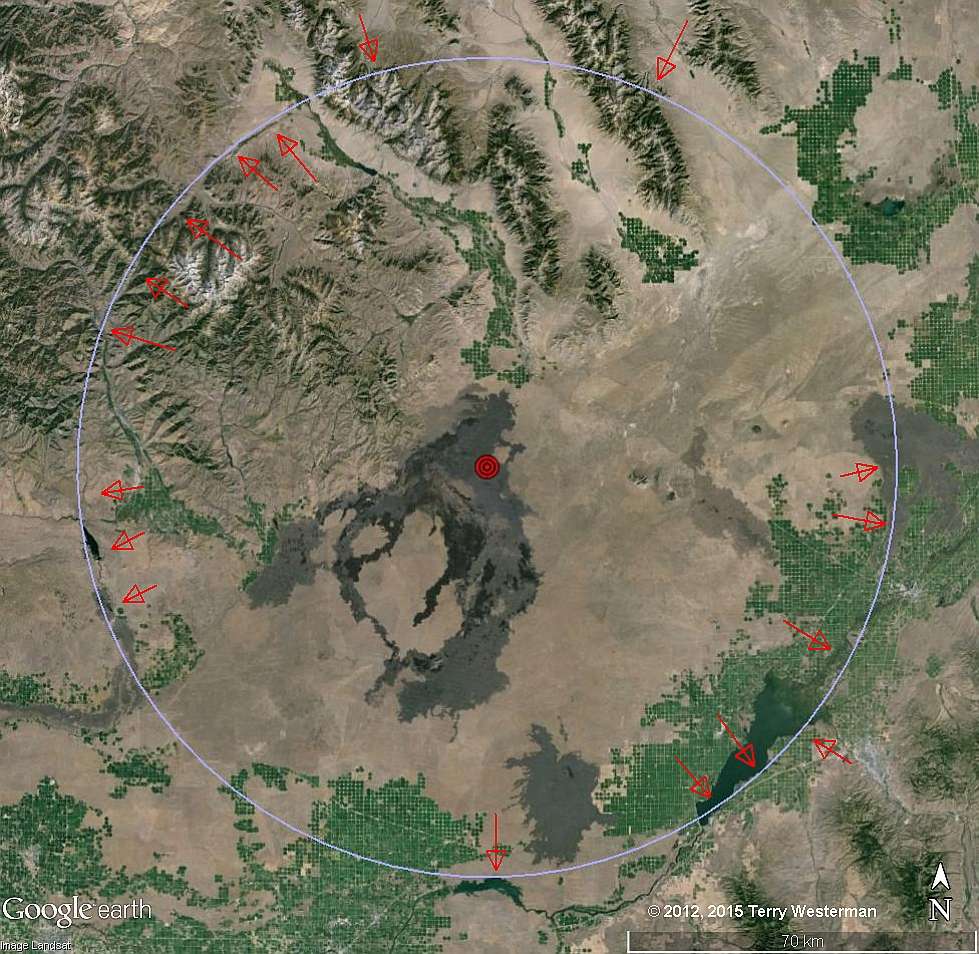
The circle the seismic wave left at
50 miles radius is very interesting and demonstrates how man has
used the form of the land created by the seismic wave. This
circle formed a valley where man has built three reservoirs to
store water. To the Southeast is the American Falls Reservoir on
the Snake River. To the South is Lake Walcott, also on the Snake
River. To the West is Magic Reservoir, on the Big Wood River,
which flows south to join the Snake River. In the Northeast
quadrant of this circle you will note the mountain valleys that
follow the circle. This is the upper reaches of the Big Lost
River.
The
volcanic area to the East, on the circle line is most likely
caused by this same seismic wave as it follows the 50 mile circle
and there is likely a crack in the Earth's crust deep enough for
lava to flow there. The other lava flows within the circle are
likely caused by shatter line cracks from the impact. A large
scale image (4800 pixels wide) is available HERE.
|
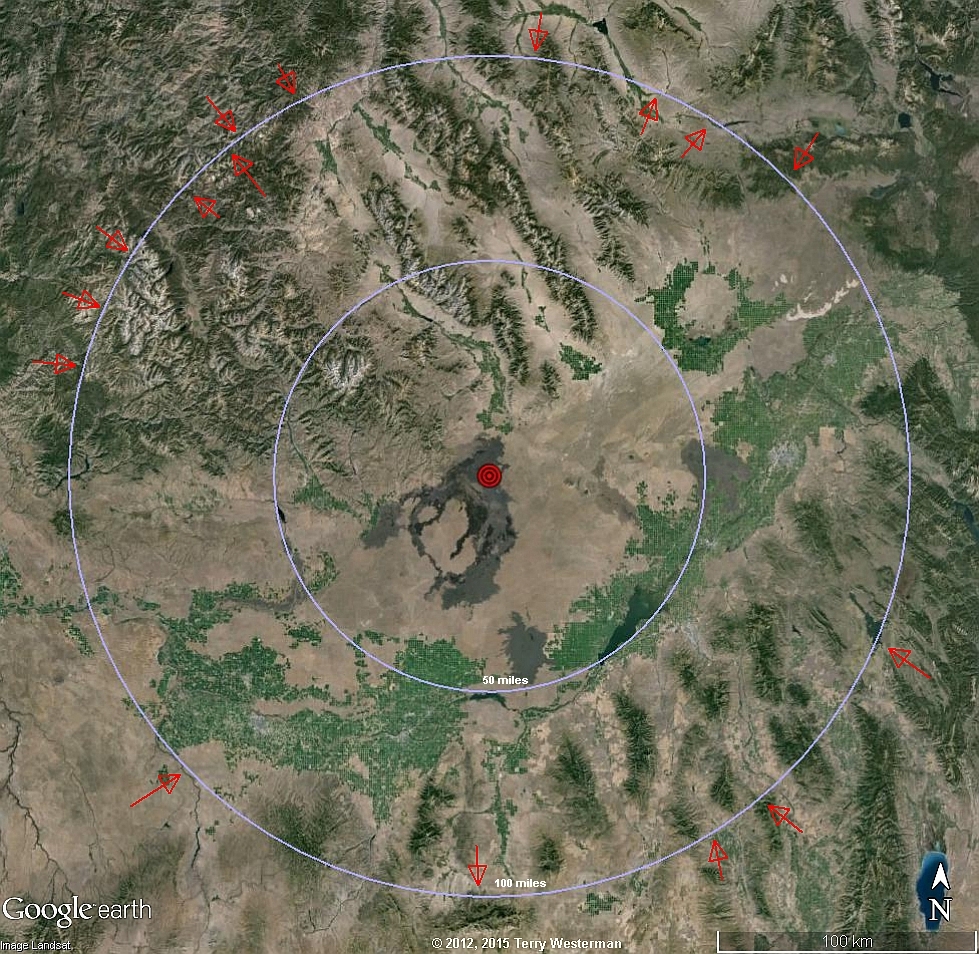
At 100 miles radius, linked to
a larger image.
|
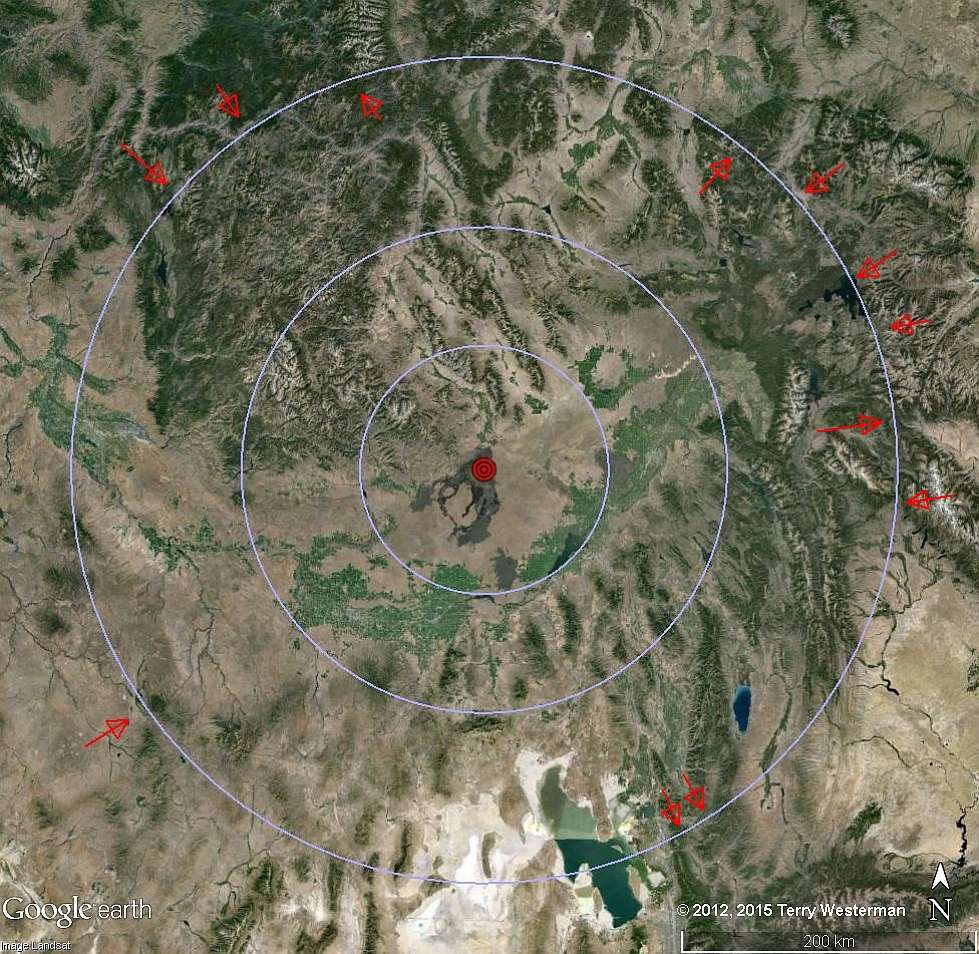
At 170 miles radius.
|
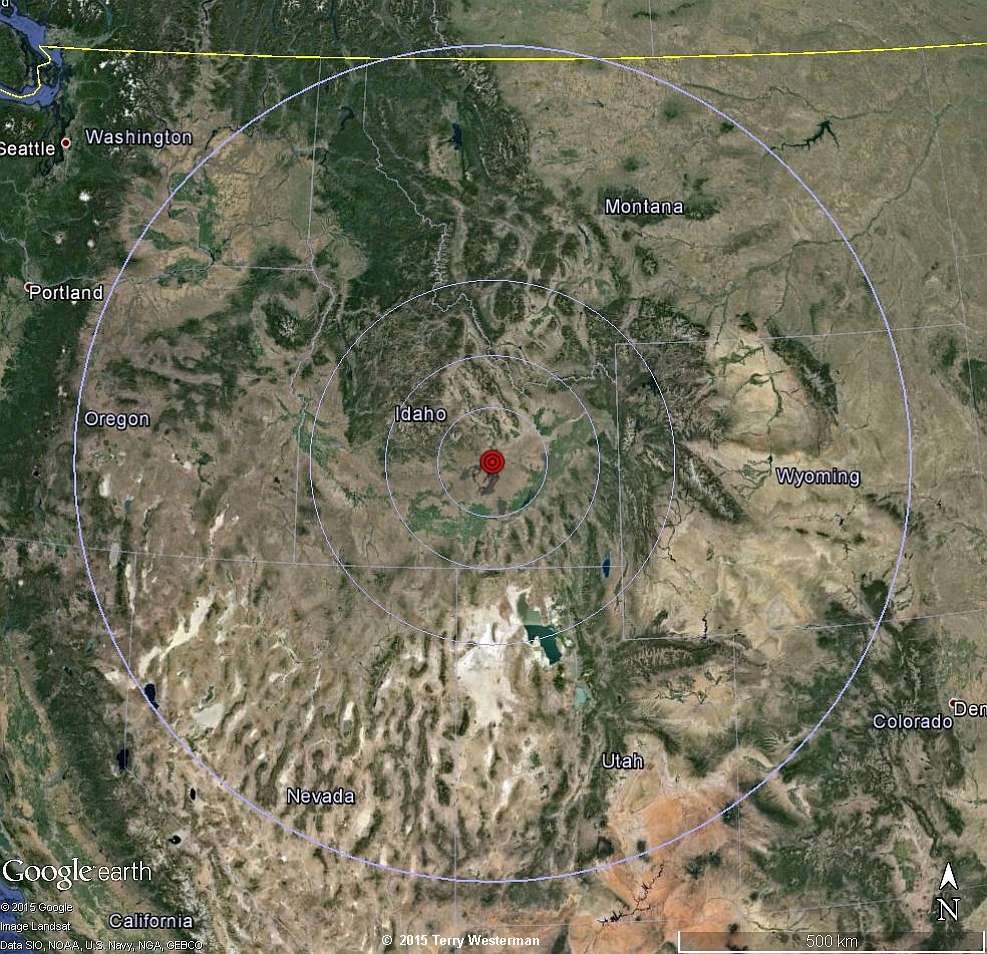
This impact
created a fine line seismic circle which is visible in places the
entire distance around the impact as fine line geographical
alignments at 400 miles radius. Some of these are shown in the
larger linked image.
|
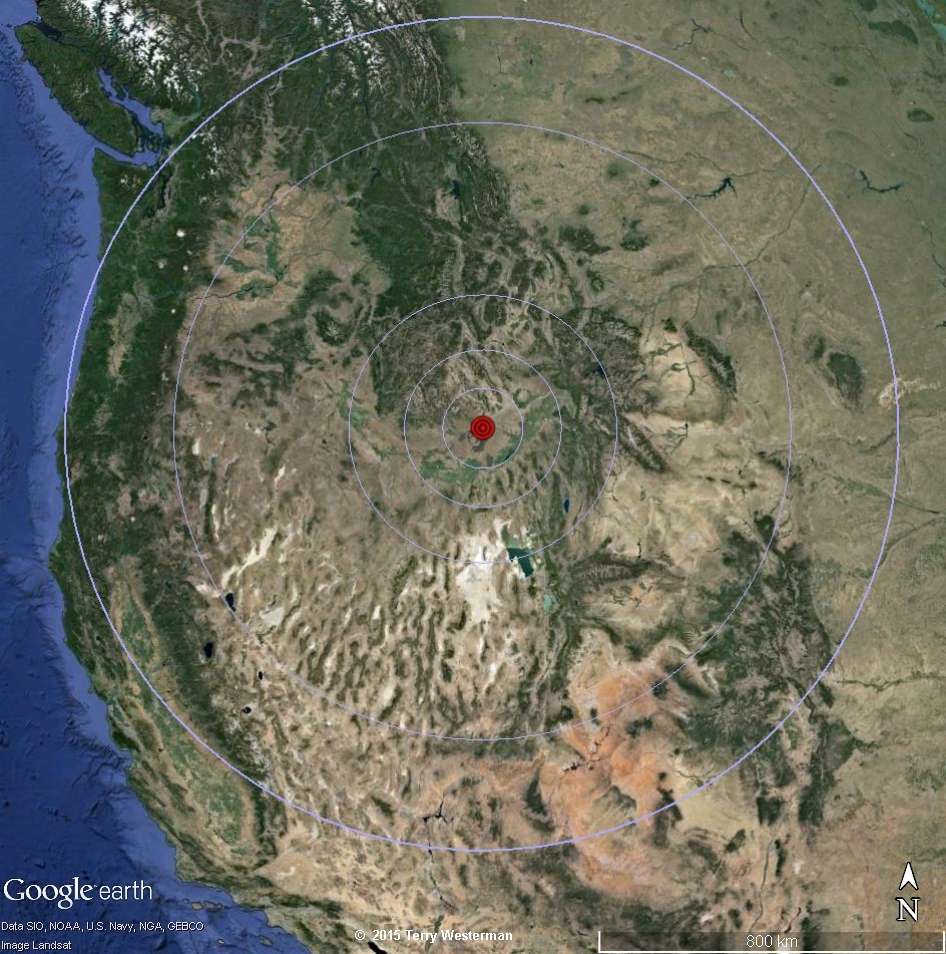
At 550 miles radius.
|
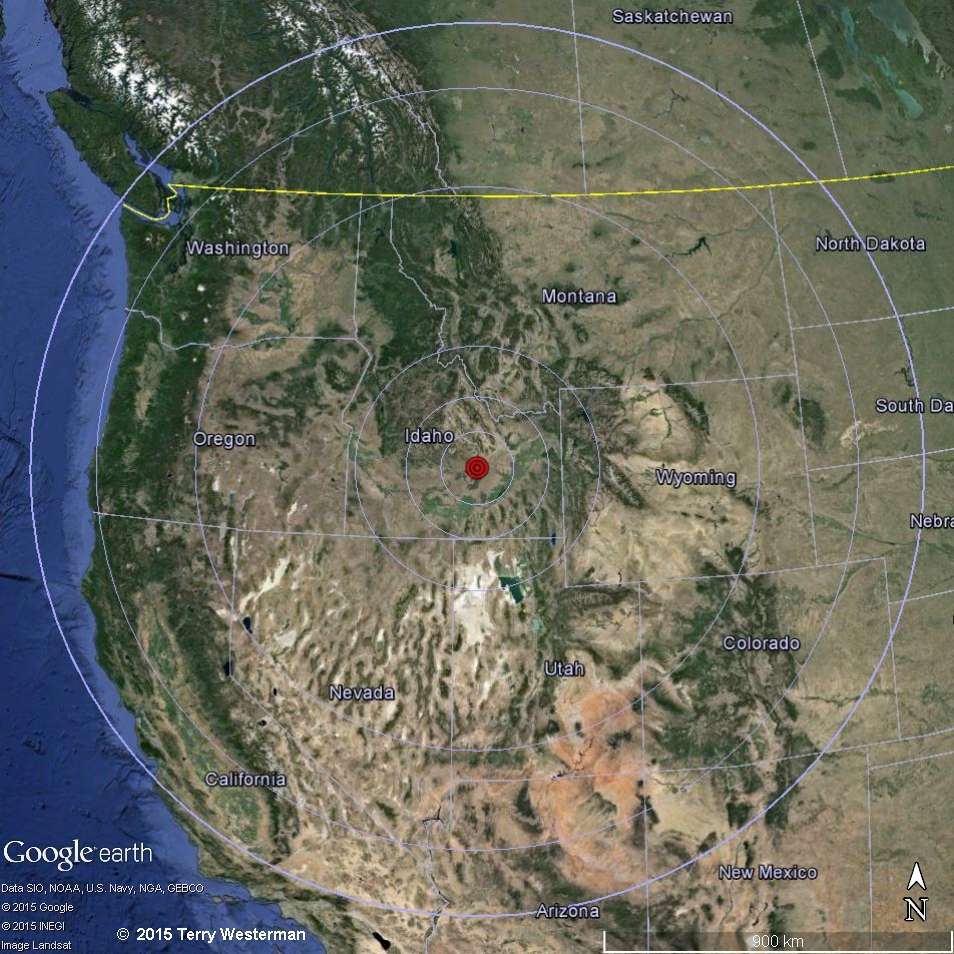
At 650 miles radius.
|

At 850 miles radius.
|








